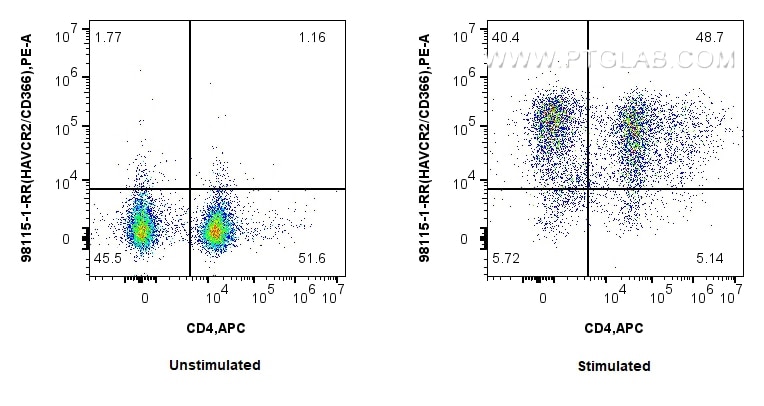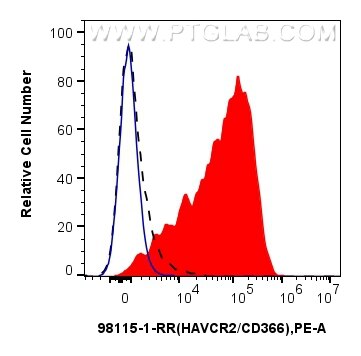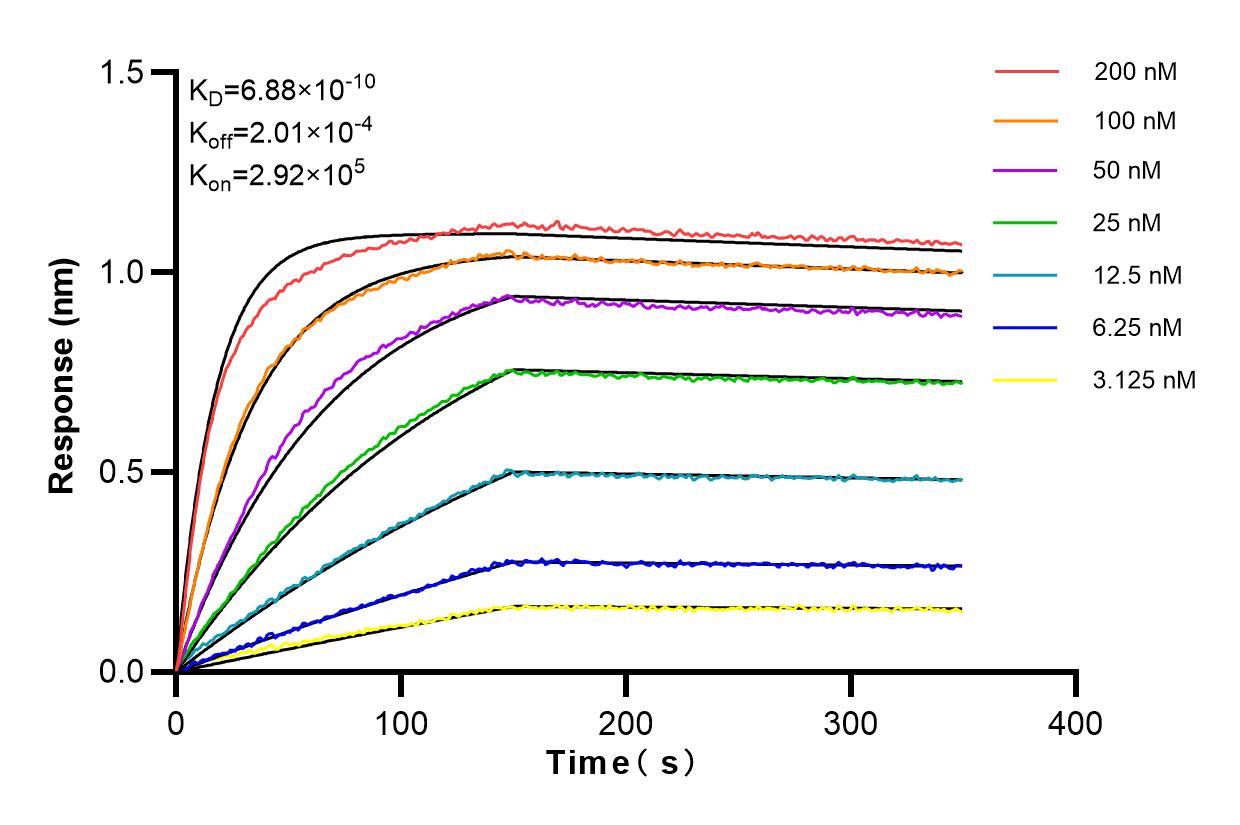Validation Data Gallery
Tested Applications
| Positive FC detected in | Anti-CD3/CD28 treated human PBMCs |
Recommended dilution
| Application | Dilution |
|---|---|
| This reagent has been tested for flow cytometric analysis. It is recommended that this reagent should be titrated in each testing system to obtain optimal results. | |
| Sample-dependent, Check data in validation data gallery. | |
Product Information
98115-1-RR targets TIM3 in FC applications and shows reactivity with human samples.
| Tested Reactivity | human |
| Host / Isotype | Rabbit / IgG |
| Class | Recombinant |
| Type | Antibody |
| Immunogen | Recombinant Protein 相同性解析による交差性が予測される生物種 |
| Full Name | hepatitis A virus cellular receptor 2 |
| Calculated molecular weight | 301 aa, 33 kDa |
| GenBank accession number | BC020843 |
| Gene Symbol | TIM3 |
| Gene ID (NCBI) | 84868 |
| RRID | AB_3672262 |
| Conjugate | Unconjugated |
| Form | Liquid |
| Purification Method | Protein A purfication |
| UNIPROT ID | Q8TDQ0 |
| Storage Buffer | PBS with 0.09% sodium azide , pH 7.3 |
| Storage Conditions | Store at 2 - 8°C. Stable for one year after shipment. |
Background Information
TIM3, also known as HAVCR2, is a member of the recently discovered T cell Ig and mucin domain-containing molecule superfamily. TIM3 is a negative regulatory molecule that is important for T cell tolerance and has a crucial role in autoimmunity and T cell exhaustion during chronic viral infection (PMID: 23180819). TIM3 is expressed by T-helper type 1 (Th1) cells, macrophage, monocyte, dendritic cells, CD8+ T cell and other lymphocyte subsets. Galectin-9 is a ligand for TIM3. TIM3-galectin-9 pathway negatively regulates T helper type 1 immunity (PMID: 16286920).
Protocols
| Product Specific Protocols | |
|---|---|
| FC protocol for TIM3 antibody 98115-1-RR | Download protocol |
| Standard Protocols | |
|---|---|
| Click here to view our Standard Protocols |


